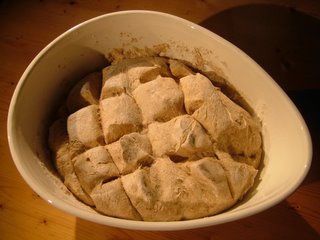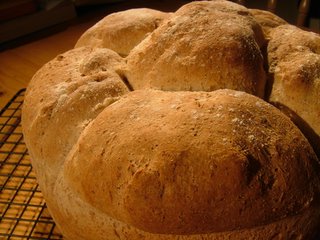I suppose I should really be calling this recipe Sardines en croute or Petits poissons et tartine in order to stop you from recoiling in horror, but I am neither proud nor French. While some ingredients, particularly certain vegetables, suffer horribly from the canning process, sardines and other oily fish become dense and flavourful when tinned. They are all the better if the enterprising canner includes other flavourings. I particularly like Ortiz sardines, which are unadorned, but Waitrose Sardine Piccanti, with a couple of dried chillies lurking in-between the fish fillets are my favourites at the moment. And with five minutes’ quick chopping and some judicious spicing on your part, they can be turned into a perfect quick supper dish. Fantastic for those nights when you don’t get home until 11pm and have eaten nothing except peanuts.
To serve one, you’ll need:
1 tin sardines
2 slices white bread
1 large shallot
1 pinch paprika
1 tablespoon dry sherry
2 teaspoons soft butter
1 lime
Salt and pepper
Toast the slices of bread lightly and set aside. Slice the shallot finely and put it in a small bowl with the drained sardines and a teaspoon of their oil, the sherry, a pinch of salt and the paprika. Use the back of a fork to mush the ingredients together – the shallot should separate into delicate rings and the sardines should be reduced to rough chunks. Pile the mixture onto the slices of toast. The mixture will look very shallot-heavy (see the picture), but don’t worry; once they’re cooked, this will just give your toast a lovely sweet background to support the fish.
Dot each slice with the butter and place under a hot grill for five minutes, until the shallots at the surface are browning and the flesh of the sardines is bubbling. Remove to a large plate and squeeze over the juice of a lime. Grind a generous amount of pepper over the slices and eat while still piping hot and crisp.




